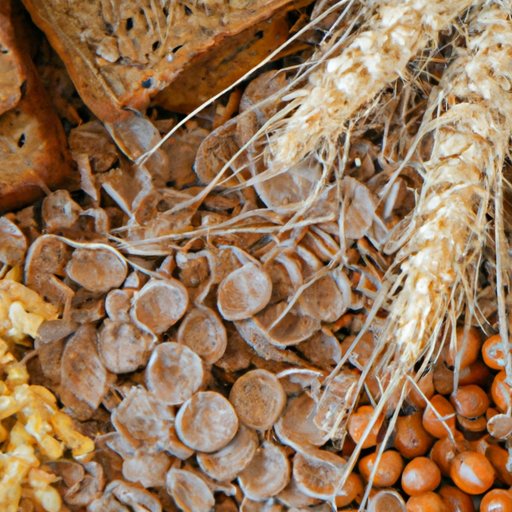
Introduction
You may have heard that fiber is an important part of a healthy diet. It’s true! Fiber can help regulate digestion, improve heart health, and even lower your risk of certain diseases. But as with anything in life, too much of a good thing can backfire. In this article, we’ll explore what happens if you eat too much fiber, the risks associated with overconsumption, and how to balance your fiber intake for optimal health.
The Risks of Overconsumption: Understanding the Effects of Too Much Fiber in Your Diet
First things first: what exactly is overconsumption? Simply put, it’s when you consume more fiber than your body can handle. This can lead to a host of uncomfortable digestive issues such as diarrhea, bloating, gas, abdominal pain, and constipation. It’s important to note that not everyone reacts the same way to overconsumption, so what may be too much for one person may be fine for another.
Examples of high-fiber foods that can lead to overconsumption include whole grains, fruits, vegetables, nuts, seeds, and legumes. While these foods are all nutritious and important for a healthy diet, it’s important to eat them in moderation and pay attention to your body’s signals.
Can You Have Too Much of a Good Thing? Exploring the Drawbacks of a High-Fiber Diet
In addition to the aforementioned digestive issues, there are potential drawbacks associated with a high-fiber diet. For example, consuming too much fiber can reduce nutrient absorption. This is because fiber binds to certain vitamins and minerals, preventing them from being absorbed into the body. Additionally, some medications may be impacted by high levels of fiber, so it’s important to consult with your healthcare provider if you’re on any long-term medication.
So how much fiber is too much? The daily recommended intake for adults is 25-30 grams, but individual needs may vary based on age, gender, and activity level. It’s important to also balance your fiber intake with other nutrients, such as protein, healthy fats, and carbohydrates, as well as your overall calorie needs.
Fiber Overload: Recognizing the Signs of Excessive Intake and How to Correct It
So, what are the signs that you may have consumed too much fiber? In addition to the aforementioned digestive issues, you may experience feelings of fullness or discomfort, decreased appetite, and low energy levels. If you suspect you’ve consumed too much fiber, it’s important to correct it before it becomes a bigger issue.
Some tips for correcting fiber overload include increasing your water intake, decreasing your fiber intake, and incorporating probiotics into your diet. It’s important to do so gradually and without sacrificing the benefits of fiber, however. Start by reducing your intake of high-fiber foods and increasing your intake of water and probiotic-rich foods like yogurt, kefir, and sauerkraut.
When Fiber Goes Wrong: The Negative Impacts of Overindulging in High-Fiber Foods
While high-fiber foods are generally considered to be healthy, some can cause issues in certain individuals. For example, some people may experience bloating and gas from cruciferous vegetables like broccoli and cauliflower. Others may have difficulty digesting certain types of fiber, such as inulin or fructans.
If you find that a particular high-fiber food is causing issues for you, it’s important to moderate your intake or explore alternative options. For example, you could try a low-FODMAP diet, which limits fermentable carbohydrates that are often difficult to digest. Speaking with a registered dietitian can also be helpful in identifying potential triggers and developing a suitable meal plan.
Balancing Your Intake: Finding the Right Amount of Fiber for a Healthy Diet and Avoiding the Pitfalls of Overconsumption
So, how do you find the right balance of fiber in your diet? It starts with understanding your individual needs and considering the other nutrients and overall calorie intake you need for optimal health. You may need to experiment with different types and amounts of fiber to find what works best for you.
In general, it’s a good idea to aim for a variety of high-fiber foods, including fruits, vegetables, nuts, seeds, and whole grains. Gradually increasing your fiber intake and drinking plenty of water can also help prevent digestive issues and reduce the risk of overconsumption.
Conclusion
Fiber is an important part of a healthy diet, but overconsumption can lead to uncomfortable digestive issues and other potential drawbacks. By understanding your individual needs, recognizing the signs of excessive intake, and balancing your fiber intake with other nutrients, you can enjoy the benefits of fiber without the negative impacts. Remember to listen to your body and speak with a healthcare professional or registered dietitian if you have any concerns.




